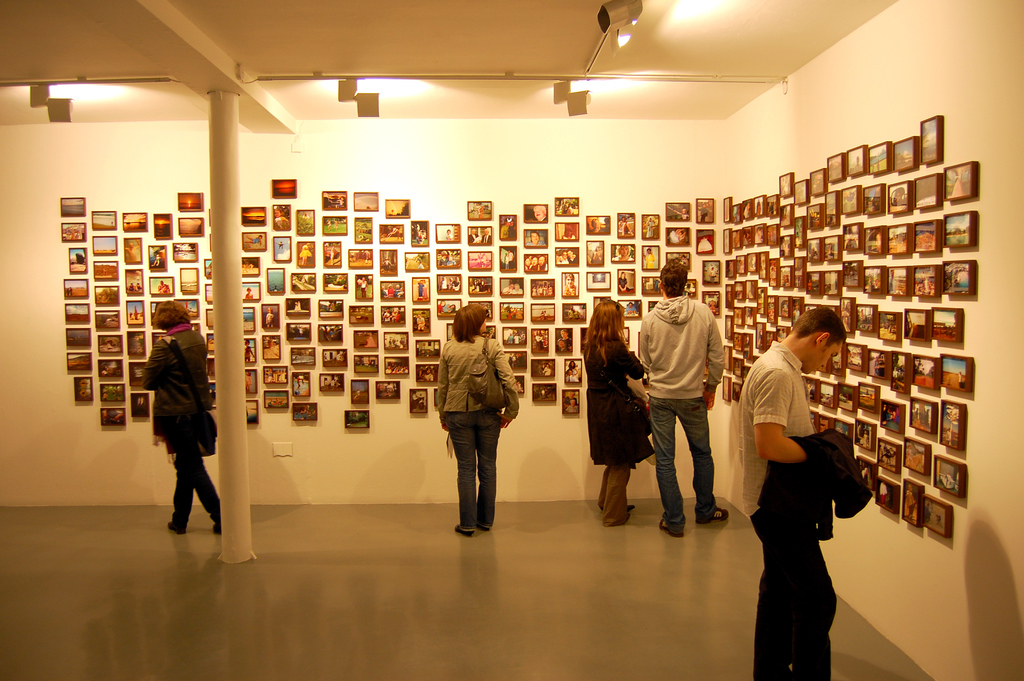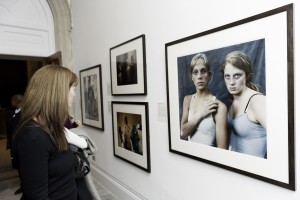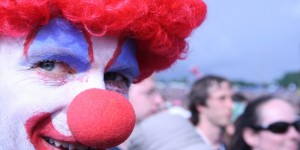
Review: The Deutsche Börse Photography Prize 2015
by Sophie Lealan | May 4, 2015
For the next month, the top floors of The Photographers’ Gallery will be filled with an innovative series of photographs – pinned or projected onto walls, printed in books and pamphlets, animated in videos, illuminated in lightboxes and framed behind glass. The images engage with life in Soviet-era Russia, violence against LGBTQIA communities, the legacy of apartheid in South Africa and the psychologically charged qualities of colour and shadow. They form projects by Nikolai Bakharev, Zanele Muholi, collaborators Mikhael Subotzky and Patrick Waterhouse, and Viviane Sassen respectively, and have been collated for the 2015 Deutsche Börse Prize. Awarded annually to a recent publication or exhibition that has made a significant contribution to photography in Europe, this year’s shortlist encompasses the medium in its political, abstract and personal contexts. It poses new questions about what photography should show, what form it can take and what role it can play in the world.
Nikolai Bakharev’s small monochrome prints, exhibited in the 2013 Venice Art Biennale, depict families, couples and friends dressed in bathing suits, posing on Russia’s public beaches. In contrast to Rineke Dijkstra’s portraits of isolated, adolescent beach-goers, Bakharev’s figures do not seem vulnerable. Instead, they depict closely-knit groups, no more so than in one image of a toddler standing on his mother’s lap, both looking up at the camera conspiratorially. Bakharev took these images in the 1980s and 1990s, a time when the actions of Russian citizens and artists were tightly controlled. Despite such constraints, his subjects seem to proffer their private lives for public consumption. They smile at the camera as if to invite the viewer into their intimacy, but the awareness of the camera also points to the staged, formal nature of these images – titled with numbers and dates rather than names.
The dignity of the individual in the face of oppression is also conveyed in ‘visual activist’ Zanele Muholi’s project Faces and Phases 2006-2014. In one of the exhibited films Muholi discusses photography’s ability to connect people, and her exhibition can be seen as an attempt to collate individual experiences into a collective, photographic presence. A series of images showing black lesbian couples are projected onto one wall of the gallery. The projection changes slowly between pictures to encourage reflection, but requires a greater amount of patience than I, and most other gallery visitors, possess. Opposite, the wall is covered with black and white portraits of the South African LGBTQIA community. Each of these individualised subjects adopts a self-possessed pose, looking directly into the lens. In contrast to Bakharev’s photographs, each is named in an accompanying printout. These portraits, pinned up with thumbtacks, evoke posters for missing people, underlined by their juxtaposition with a large white sheet on which handwritten statements relate the appalling homophobic violence faced by this community.
South Africa also provides the location for Mikhael Subotzky and Patrick Waterhouse’s Ponte City. The project tells the story of the tallest residential building in Africa: from its inception as luxury apartments for white South Africans during apartheid, to its use as a dilapidated shelter for immigrants and criminals, to its takeover by developers in 2007 who attempted to evict residents. We can see the doors, windows and television sets of the remaining people in this building displayed across three large lightboxes which tower over the viewer, echoing the monumental scale of the Ponte City high-rise. Past residents appear in photographs found in their abandoned apartments, their ghostly images suggesting the importance of photography in recording and even creating a sense of home, even when the home itself no longer remains. In one piece, creased and faded photographs found in residences are pinned on top of images by Subotzky and Waterhouse showing these same spaces, so that we see a man reading in bed and, underneath, this same bed now broken and unoccupied. Although displaying an unknown individual’s personal photographs in a gallery is ethically problematic, Ponte City rescues the traces of these individuals from the remnants of their former lives and is the most effective of the four projects at highlighting the emotional force of the photograph itself.
While these three projects seek to document and, to some extent, intervene in social issues, Viviane Sassen’s Umbra is instead concerned with photography’s psychological qualities and its ability to deceive. In her saturated photographs of colour, light and shadow things are never quite as they first appear. Of all the exhibited works, their disturbing effect has most distinctly remained in my mind. An unframed photograph of four shoes curls off the wall, its upturned corner aligning exactly with the shadow within the photograph itself, while an almost mesmeric effect is created by a screen of moving images which are doubled in a mirror. Calling to mind the visual tricks of the Surrealists, in particular the bright palette and dark shadows of de Chirico’s paintings, Sassen’s work goes beyond what we normally see. She depicts shadows not as an absence of light, but as a sinister presence. This is particularly powerful in the disconcerting photograph of a boy lying on paving stones. Though we only see a single branch, his body is almost entirely obscured by the dark shadows of a looming tree.
The Deutsche Börse Prize exhibition presents four thoughtful, innovative projects. Each vies for the gallery visitor’s attention, and each allows the viewer to learn something new about society and art. Which work eventually wins the prize is less interesting than the dialogue the exhibition establishes between these very different pieces, which are international in their scope yet always specific to their context. As this exhibition demonstrates, it is often on gallery walls that we can see what photography is able to do in the world.
The Deutsche Börse Photography Prize 2015 will be exhibited in The Photographers’ Gallery, London, between 17th April and 7th June 2015.




